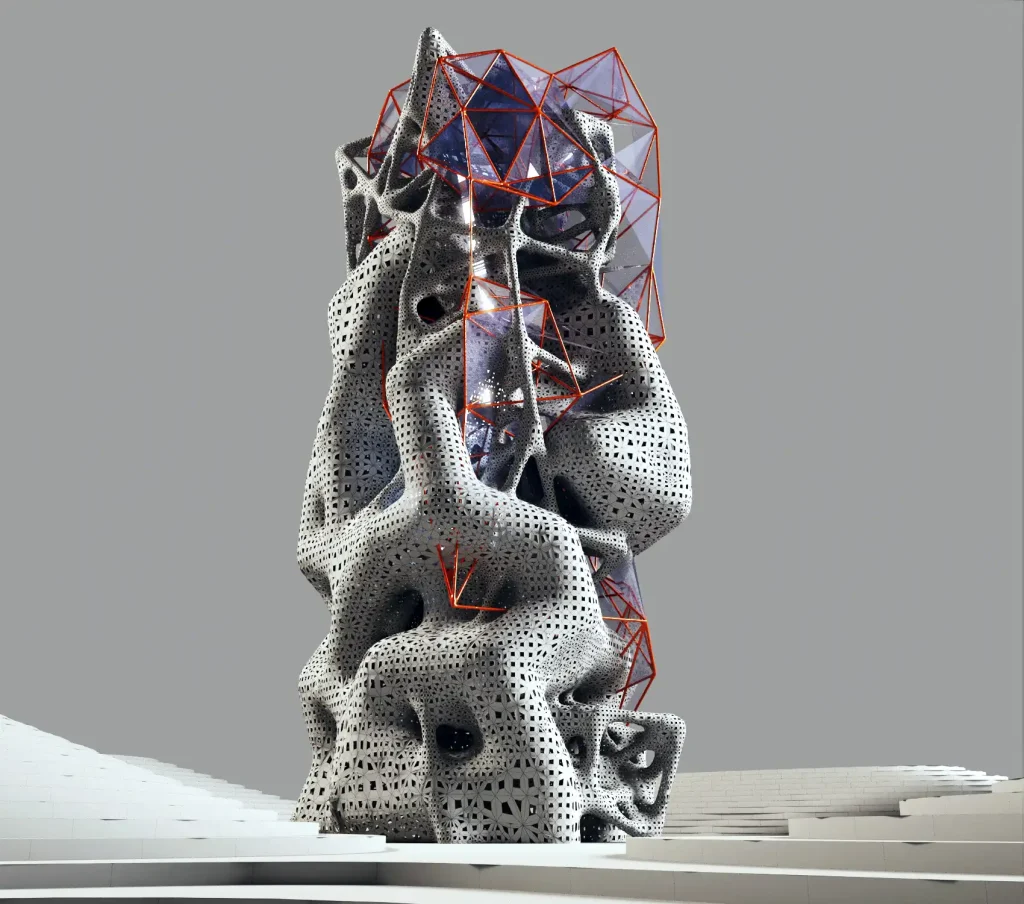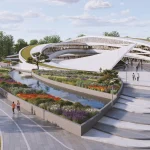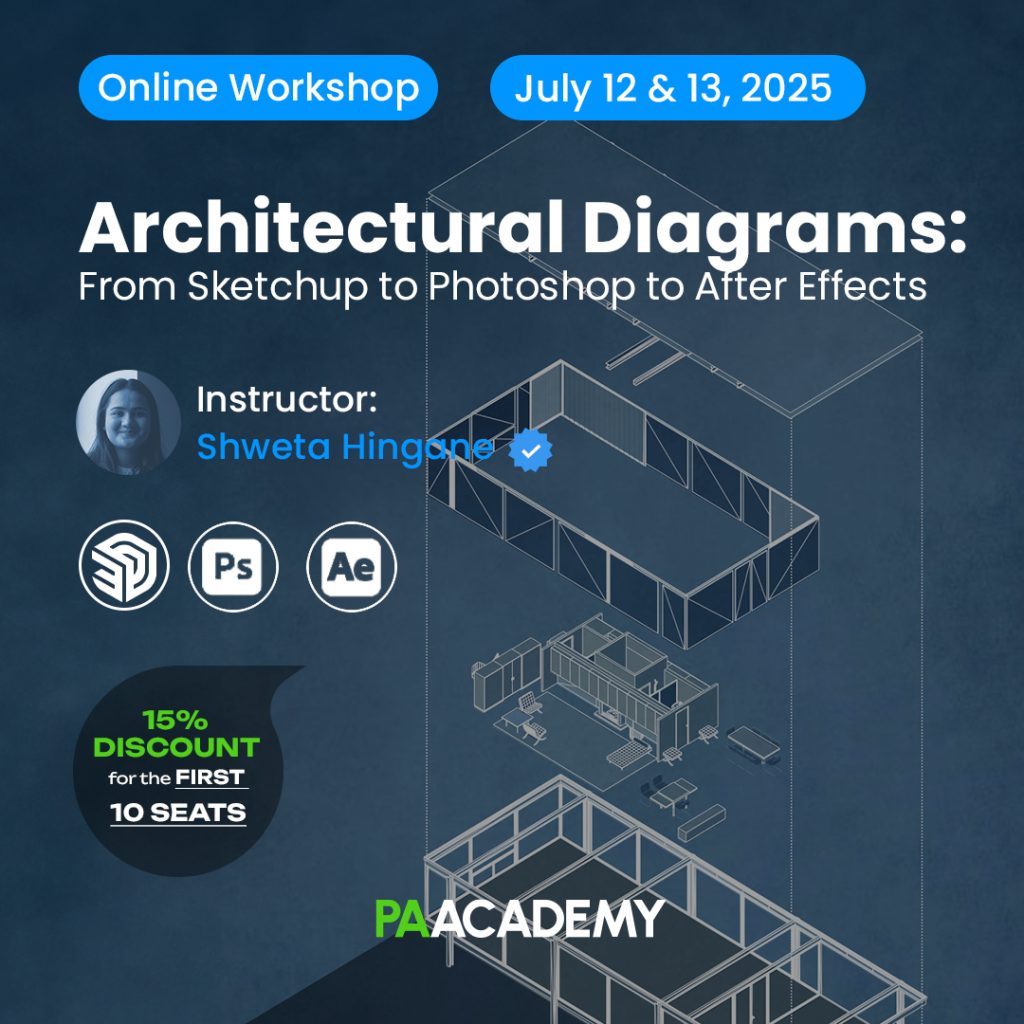
Every design and architectural tool brings unique strengths to the creative process—whether sketching, physical modeling, or digital modeling, each plays a distinct role at different design stages.
The rise of parametric design has introduced powerful tools like Grasshopper, revolutionizing how designers approach every project phase, from initial conceptualization to final execution. By enabling the creation of complex, dynamic forms and data-driven solutions, Grasshopper challenges traditional methods and drives a paradigm shift in architecture and design, pushing boundaries and redefining what’s possible.
With the right expertise, Grasshopper can become a designer’s go-to tool, seamlessly integrated into every step of the workflow. Let’s dive into Grasshopper’s standout features that make it a top choice for architects and designers looking to lead the future of design innovation.

1. Speed!
When experimenting with masses and forms, it is almost impossible to envision, test, and create all the possibilities and iterations. However, with Grasshopper, this is a problem of the past. With a simple gliding gesture, you can adjust numerous values and parameters and explore infinite options until you find the one that works best. It is also important to note that Grasshopper can help reduce repetitive tasks, saving valuable time for more critical parts of the design process.
While getting familiar with how Grasshopper works takes some time, we can guarantee that the results will be worth the struggle!
2. A Well-Rounded Tool
Whether you are an architect concerned with environmental and sustainable design or aspire to create a visually compelling design, Grasshopper offers a wide range of plugins to make your vision come to life.

A. Sustainable and Environmental Design
With the increasing role of architects in sustainable design, tools like Grasshopper aim to provide architects with the necessary analysis tools that go hand in hand with the rising parametric design trends. Grasshopper allows the architect to manipulate values such as geometry, proportions, angles of roof, and orientation. Energy-efficient designs are optimized, allowing one to find the greatest area possible for PV panels and monitor the building’s performance with natural light, ventilation, and acoustics. With its parametric form, real-time modification occurs, and all input values change automatically, updating the entire model for new outcomes in terms of design-energy performance.

B. Creative Design
Whether you aspire to create seamless, smooth, sculpture-like forms or more complex meshes and rigid structures, Grasshopper can facilitate the process at the level of detail you need. The different Grasshopper plugins, such as WeaveBird and LunchBox, provide endless possibilities through surfaces, meshes, and nodes.
The flexibility of the software helps designers explore organic shapes, adaptive facades, and custom structural systems that would be difficult, time-consuming, and even unattainable using traditional methods while maintaining precise control over every aspect of the design.
3. The Scale
Grasshopper is more than just a tool for designers. In fact, the plugins work equally well regardless of the scale you are working at. If you are experimenting with massing at an urban scale, building design and form, or even at a much smaller scale with furniture and product design, Grasshopper is here to help. The possibilities and scales are endless, reflecting the future of this invaluable tool.

4. Coding Logic
In today’s fast-paced 21st century, having a basic understanding of coding and programming is essential to staying current. Although this can feel daunting, Grasshopper offers an accessible starting point. While it isn’t a traditional coding language, it introduces the principles of computational design, helping users develop problem-solving skills using various components and tools. This hands-on approach reflects one of the core goals of coding: creating efficient solutions to complex challenges. This makes Grasshopper an invaluable gateway to help designers boost their digital design and coding skills!
5. The Community
Last but not least, the parametric design and Grasshopper community is growing, driven by the design firms and designers embracing this innovative approach. With the endless online resources, tutorials, and forums, support is always just a click away, allowing users to ask questions and receive guidance from experienced community members.
Furthermore, most Grasshopper plugins are free and open-access, making advanced tools available to everyone, regardless of skill level. By dedicating time and effort to mastering Grasshopper, you’ll gain valuable skills and join a dynamic, ever-evolving global network of designers. Staying engaged with this community ensures you’ll remain at the forefront of design innovation as parametric methods continue to shape the future of architecture and design.

At PAAcademy, we are dedicated to our mission of educating and leading the Parametric Design community with innovation and cutting-edge knowledge. By connecting students with industry pioneers and offering hands-on experience through interactive workshops and live events, we empower the next generation of designers to push the boundaries of architecture and design.
If you want to take your Grasshopper skills to the next level, we highly recommend you join our Advanced Grasshopper 2.0 this weekend!
If you are a beginner looking for a place to start, check out Grasshopper for Beginners 1.0




















Leave a comment